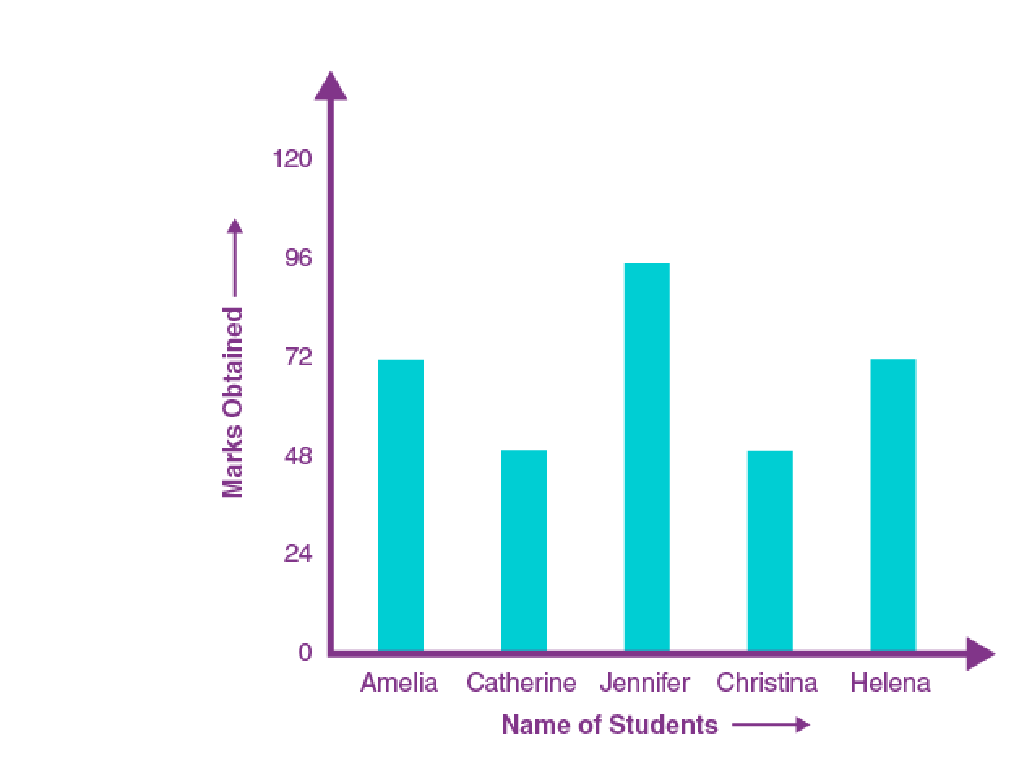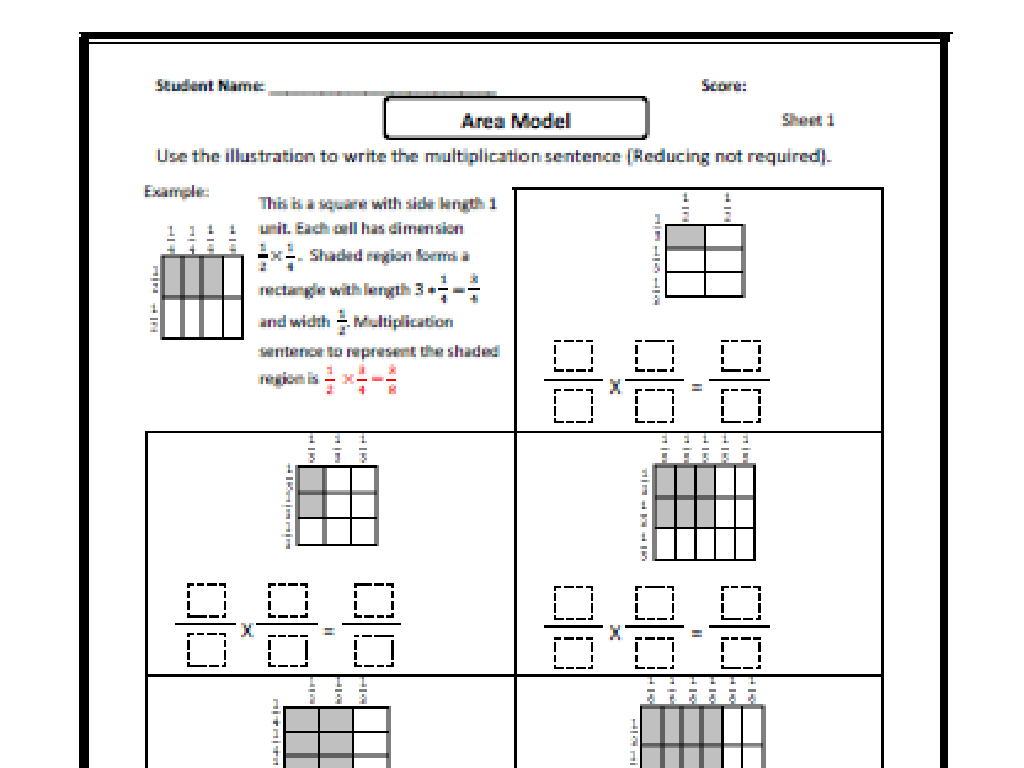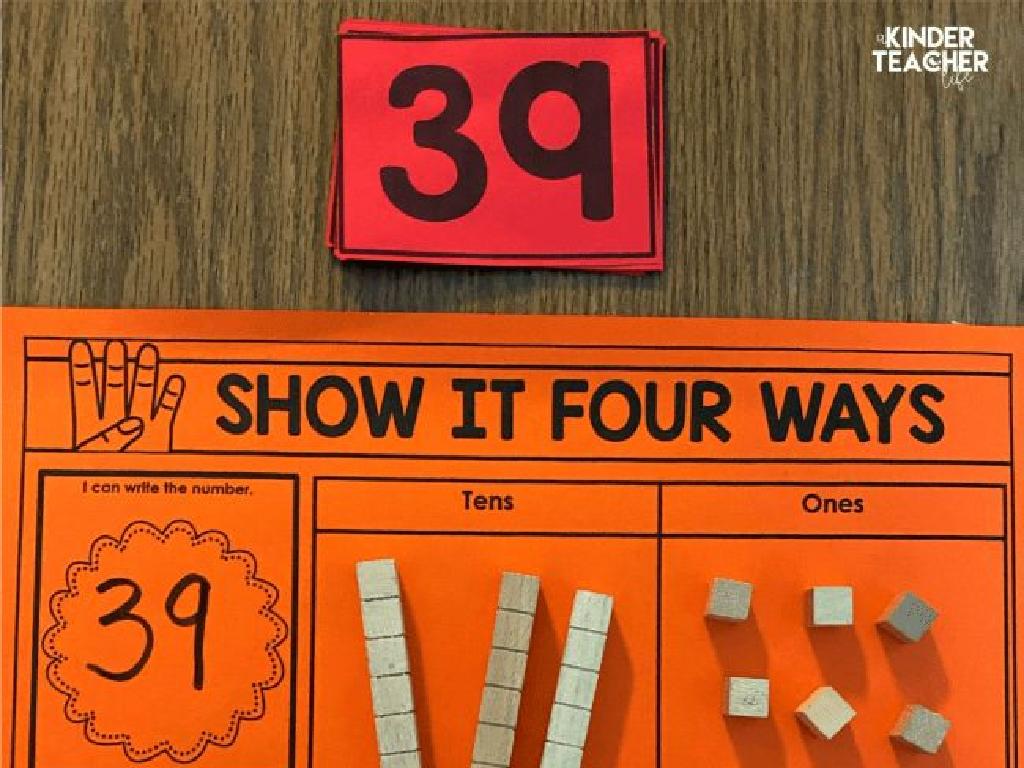Subtract Integers Using Counters
Subject: Math
Grade: Seventh grade
Topic: Operations With Integers
Please LOG IN to download the presentation. Access is available to registered users only.
View More Content
Subtracting Integers Using Counters
– Real-life integer applications
– Think temperature: above/below zero
– Subtraction vs. Addition of integers
– Subtraction can mean taking away or finding the difference
– Using counters for subtraction
– Counters represent positive/negative values
– Practice with real examples
– Let’s try subtracting with counters: 5 – (-3)
|
This slide introduces the concept of subtracting integers using counters, a visual aid that helps students understand positive and negative numbers in a tangible way. Start by discussing how integers are used in real-life situations, such as temperatures above and below zero. Explain the difference between subtraction and addition of integers, emphasizing that subtraction can represent taking away or determining how much one number differs from another. Demonstrate how to use counters to represent positive and negative values, and walk through an example such as 5 – (-3), showing how to add 3 positive counters to the 5 already present to find the result. Encourage students to think of other real-life examples where subtracting integers is applicable, and prepare them for hands-on practice during the lesson.
Understanding Integers
– Integers: Positive, negative, and zero
– Integers are whole numbers without fractions
– Integers on the number line
– A visual tool for ordering integers
– Real-world integer applications
– Temperatures, elevations, debts, credits
– Subtracting integers with counters
– Use counters to visualize subtraction
|
Integers are the set of whole numbers that include all positive numbers, negative numbers, and zero. They are fundamental in math and are represented visually on the number line, which helps in understanding their order and magnitude. Integers are used to represent real-world situations such as temperature changes, altitude above or below sea level, and financial transactions like deposits (positive) and withdrawals (negative). When teaching subtraction of integers, using counters can provide a tangible way for students to visualize and understand the concept. For example, red counters can represent negative integers, and yellow counters can represent positive integers. By physically adding and removing counters, students can see the result of subtraction operations.
Subtracting Integers with Counters
– Counters as integer representations
– Counters help us see the value of numbers.
– Red for negative, yellow for positive
– Use red counters for negatives, yellow for positives.
– Visualize subtraction with counters
– Subtract by removing counters visually.
– Practice with different integer pairs
– Try subtracting -2 from 3, or 5 from -1.
|
This slide introduces the concept of using counters to represent integers and perform subtraction. Counters are a tangible way for students to grasp positive and negative values. Red counters will represent negative integers, while yellow counters will stand for positive integers. By visualizing the operation of subtraction with these counters, students can better understand the process of combining positive and negative numbers. Encourage students to practice with various pairs of integers to solidify their understanding. For example, subtracting -2 from 3 would involve starting with 3 yellow counters and removing 2 red counters, resulting in a total of 5 yellow counters.
Subtracting Integers with Counters
– Subtraction as ‘taking away’
– Red/Yellow counters represent zero
– Pair one red (negative) and one yellow (positive) to make zero
– Example: Subtract -3 from -5
– Use 5 red counters, take away 3 red counters, how many left?
– Visualizing subtraction with counters
– Counters help us ‘see’ the subtraction
|
This slide introduces the concept of subtracting integers using counters, which is a tangible way for students to understand integer operations. Subtraction is often conceptualized as ‘taking away’ from a group. In this method, we use red counters to represent negative numbers and yellow counters for positive numbers. A red and a yellow counter together represent zero because they cancel each other out. For the example, students will use 5 red counters to represent -5 and then ‘take away’ 3 red counters to represent subtracting -3. This visual approach helps students grasp the concept of subtracting negative numbers, which can be abstract without a visual aid. Encourage students to practice with different integer subtraction problems using counters to build their confidence and understanding.
Rules for Subtracting Integers with Counters
– Subtracting a positive: remove yellows
– Subtracting a negative: remove reds
– Use zero pairs when short on counters
– If you don’t have enough counters, add a yellow-red pair, which equals zero.
– Practice with different integer pairs
– Try examples like 5 – (-3) or -2 – 4 to apply these rules.
|
This slide introduces the concept of subtracting integers using counters, which is a visual and tactile method to help students understand integer operations. Yellow counters represent positive integers, and red counters represent negative integers. When subtracting a positive integer, students should physically remove the corresponding number of yellow counters. Conversely, when subtracting a negative integer, they should remove red counters. If there are not enough counters to remove, students should add zero pairs (one yellow and one red counter together, which cancel each out) until they have enough to subtract. Encourage students to practice with various integer pairs to become comfortable with the concept. Provide several examples and allow students to work through problems in pairs or groups for better understanding.
Subtracting Integers Using Counters
– Example: Subtract -2 from 4
– Starting with 4 positives, remove 2 negatives
– Step-by-step visual guide
– Visualize using counters: red for negative, yellow for positive
– Grasp the subtraction process
– Recognize subtraction as removing value
– Comprehend the final result
– Result is 6, since removing a negative is like adding a positive
|
This slide provides a clear example of how to subtract integers using counters, which is a tangible way for students to understand integer operations. By starting with 4 positive counters and removing 2 negative ones, students can visually see that they are actually adding to the total count, leading to a result of 6. It’s crucial to emphasize that subtracting a negative is the same as adding a positive, which can be a challenging concept for some students. Encourage them to practice with different numbers and to use the counters until they feel comfortable with the process.
Practice: Subtracting Integers with Counters
– Subtract integers using counters
– Example 1: 5 – (-3)
– Use 5 positive counters, add 3 negative counters, then remove negatives
– Example 2: -6 – 2
– Start with 6 negative counters, then add 2 more negatives
– Share your counter setups
– Discuss different methods and strategies used
|
This slide is designed for students to apply their knowledge of subtracting integers using counters. Students should try to solve the problems independently, using positive counters for positive integers and negative counters for negative integers. For example 1, they should start with 5 positives and add 3 negatives, then remove the negatives to find the result. For example 2, they should start with 6 negatives and add 2 more negatives. After completing the problems, students will share their counter setups with the class, allowing them to visualize and discuss different methods and strategies for subtracting integers. This activity will help solidify their understanding of the concept through hands-on practice and peer learning.
Class Activity: Counter Subtraction Race
– Form pairs for the activity
– Compete to solve subtraction problems
– Use counters to demonstrate solutions
– Represent positive and negative integers with different colored counters
– Winners explain methods to the class
– Sharing strategies reinforces understanding
|
This interactive class activity is designed to engage students in practicing the subtraction of integers using physical counters. By working in pairs, students can collaborate and challenge each other, turning the learning process into a fun competition. Provide each pair with a set of subtraction problems and two different colored counters to represent positive and negative integers. The first pair to solve a problem correctly will explain their method to the class, which encourages clear communication and reinforces the concept for all students. As a teacher, be prepared to offer guidance and ensure fair play. Have additional problems ready for early finishers or as a tie-breaker if needed.
Conclusion: Subtracting Integers with Counters
– Recap on integer subtraction
– Reviewed using counters to subtract integers visually
– Significance of mastering this
– Understanding subtraction is foundational for higher math concepts
– Preview: Multiplying Integers
– Next lesson will explore how to multiply integers effectively
– Encourage practice at home
|
As we wrap up today’s lesson on subtracting integers using counters, it’s crucial to revisit the key points to ensure students have a solid understanding. Emphasize the importance of this concept as it forms the basis for more complex operations in mathematics. Give students a glimpse into the next lesson on multiplying integers to pique their interest and prepare them for continued learning. Encourage them to practice at home with additional exercises to reinforce their skills. Remember, proficiency in integer operations is essential for success in algebra and beyond.






